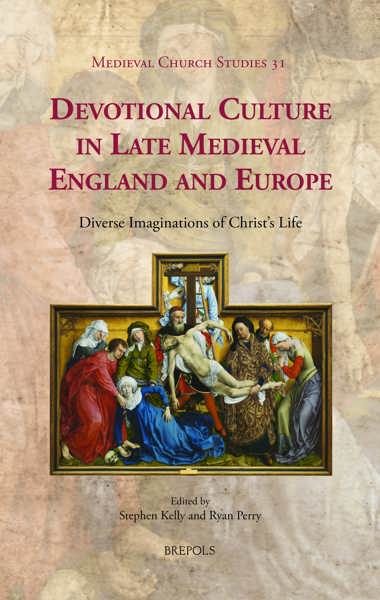
Medieval Liège at the Crossroads of Europe
Monastic Society and Culture, 1000–1300
Steven Vanderputten, Tjamke Snijders, Jay Diehl (eds)
- Pages: 381 p.
- Size:156 x 234 mm
- Illustrations:13 b/w, 8 tables b/w., 3 Maps
- Language(s):English, French
- Publication Year:2017
- € 110,00 EXCL. VAT RETAIL PRICE
- ISBN: 978-2-503-54540-0
- Hardback
- Available
- € 110,00 EXCL. VAT RETAIL PRICE
- ISBN: 978-2-503-56897-3
- E-book
- Available
This volume collects studies on the role of monastic institutions in the exchange of cultural and socio-economic capital in the medieval diocese of Liège.
“This well-curated volume of essays successfully sheds light on the dynamic and little understood history of monastic communities in the bishopric of Liège in the central Middle Ages (…) I highly recommend this stimulating and cohesive volume of essays to historians of medieval monasticism and their students.” (Scott G. Bruce, in The Medieval Review, 2018.05.15)
« Bref, l’ouvrage est une véritable réussite, de son introduction à sa conclusion. » (Jérôme Verdoot, in Francia-Recensio, 2, 2018)
« Medieval Liège at the Crossroads of Europe propose d’intéressantes pistes de réflexion pour qui souhaite s’intéresser au monde monastique liégeois. » (Kevin Schmidt, dans Le Moyen Âge, 2, 2021, p. 430)
During the high Middle Ages, the bishopric of Liège found itself at a cultural crossroads between the German Empire and the French lordships. The Liègeois themselves summed up the situation when they declared that: ‘Gaul considers us its most distant inhabitants, Germany as nearby citizens. In fact we are neither, but both at the same time’. This same complexity is also echoed by present-day historians, who have described Liège as a hub of interactions between two great civilisations. Medieval monastic communities in Liège were key sites of this exchange, actively participating in the cultural developments, social networks, and political structures of both regions.
Bringing together the work of international scholars, this collection of essays addresses the problem of monastic identity and its formation in a region that was geographically wedged between two major competing socio-political powers. It investigates how monastic communities negotiated the uncertainties of this situation, while also capitalizing on the opportunities it presented. As such, this book sheds light on the agency of monastic identity formation in a small but complex region caught at the crossroads of two major powers.
Introduction
Tjamke Snijders, Jay Diehl, and Steven Vanderputten
Wandering Abbots, Abbatial Mobility, and stabilitas loci in Eleventh-Century Lotharingia and Flanders
Helena Vanommeslaeghe
Imperial Abbacy Meets French Lordship: Stavelot-Malmedy and the County of Luxembourg under Thibaut of Bar and Ermesinde (1197-1247)
Nicolas Schroeder
Between Identity, History, and Rivalry: Hagiographic Legends in Trier, Cologne, and Liège
Klaus Krönert
Near Neighbors, Distant Brothers: The Inter-monastic Networks of Benedictine Houses in the Southern Low Countries (900-1200)
Tjamke Snijders
Reims, Liège, and Institutional Reform in the Central Middle Ages: Flavius Josephus as a Father of the Church
Diane Reilly
Masters and Schools at St.-Laurent: Rupert of Deutz and the Scholastic Culture of a Liègeois Monastery
Jay Diehl
The Investiture Controversy in the Diocese of Liège Reconsidered: An Inquiry in the Positions of the Abbeys of Saint-Hubert and Saint-Laurent and the Canonist Alger of Liège (1091-1106)
Ortwin Huysmans
Between the Empire and the Reform Papacy: The Abbey of Saint-Hubert and the Impact of its Papal Bull (1074) on Ecclesiastical Tradition and Monastic Identity in the Diocese of Liège
Brigitte Meijns
Identités monastiques dans un monde bouleversé: Représentations identitaires dans la Chronique de Saint-Hubert, dite Cantatorium (diocèse de Liège, début XII siècle)
Michel Margue
The mulieres religiosae, Daughters of Hildegard of Bingen? Interfaces Between a Benedictine Visionary, the Cistercians of Villers, and the Spiritual Women of Liège
Sara Moens
The Religious Women of Liège at the Turn of the Thirteenth Century
John Van Engen
Conclusion
Alexis Wilkin




